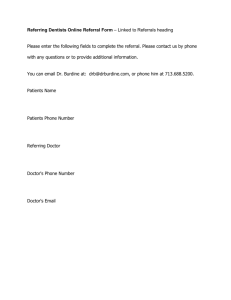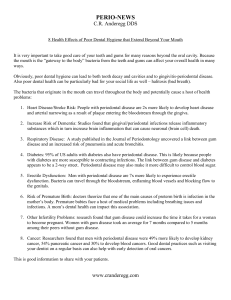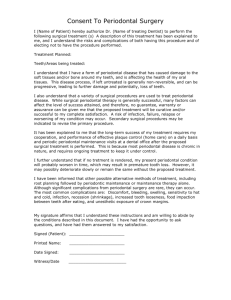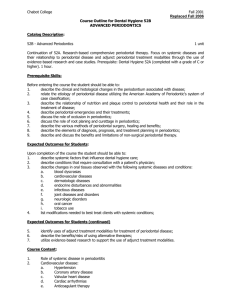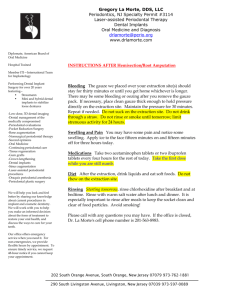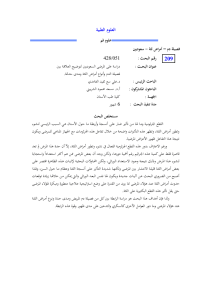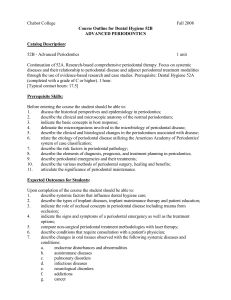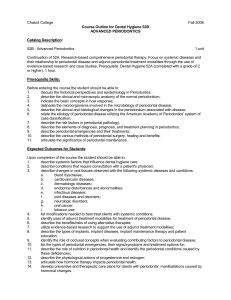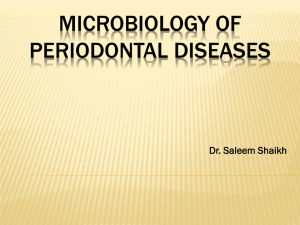research 5 - King Saud University Repository
advertisement
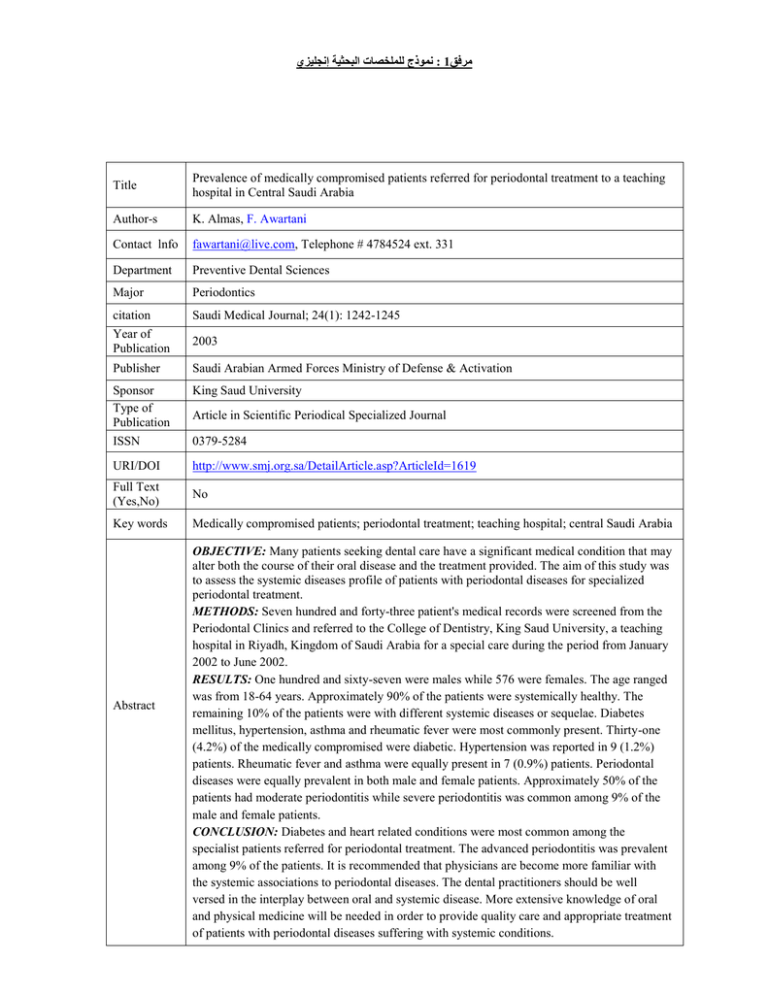
نموذج للملخصات البحثية إنجليزي: 1مرفق Title Prevalence of medically compromised patients referred for periodontal treatment to a teaching hospital in Central Saudi Arabia Author-s K. Almas, F. Awartani Contact lnfo fawartani@live.com, Telephone # 4784524 ext. 331 Department Preventive Dental Sciences Major Periodontics citation Year of Publication Saudi Medical Journal; 24(1): 1242-1245 Publisher Saudi Arabian Armed Forces Ministry of Defense & Activation Sponsor Type of Publication ISSN King Saud University URI/DOI http://www.smj.org.sa/DetailArticle.asp?ArticleId=1619 Full Text (Yes,No) No Key words Medically compromised patients; periodontal treatment; teaching hospital; central Saudi Arabia Abstract 2003 Article in Scientific Periodical Specialized Journal 0379-5284 OBJECTIVE: Many patients seeking dental care have a significant medical condition that may alter both the course of their oral disease and the treatment provided. The aim of this study was to assess the systemic diseases profile of patients with periodontal diseases for specialized periodontal treatment. METHODS: Seven hundred and forty-three patient's medical records were screened from the Periodontal Clinics and referred to the College of Dentistry, King Saud University, a teaching hospital in Riyadh, Kingdom of Saudi Arabia for a special care during the period from January 2002 to June 2002. RESULTS: One hundred and sixty-seven were males while 576 were females. The age ranged was from 18-64 years. Approximately 90% of the patients were systemically healthy. The remaining 10% of the patients were with different systemic diseases or sequelae. Diabetes mellitus, hypertension, asthma and rheumatic fever were most commonly present. Thirty-one (4.2%) of the medically compromised were diabetic. Hypertension was reported in 9 (1.2%) patients. Rheumatic fever and asthma were equally present in 7 (0.9%) patients. Periodontal diseases were equally prevalent in both male and female patients. Approximately 50% of the patients had moderate periodontitis while severe periodontitis was common among 9% of the male and female patients. CONCLUSION: Diabetes and heart related conditions were most common among the specialist patients referred for periodontal treatment. The advanced periodontitis was prevalent among 9% of the patients. It is recommended that physicians are become more familiar with the systemic associations to periodontal diseases. The dental practitioners should be well versed in the interplay between oral and systemic disease. More extensive knowledge of oral and physical medicine will be needed in order to provide quality care and appropriate treatment of patients with periodontal diseases suffering with systemic conditions.


